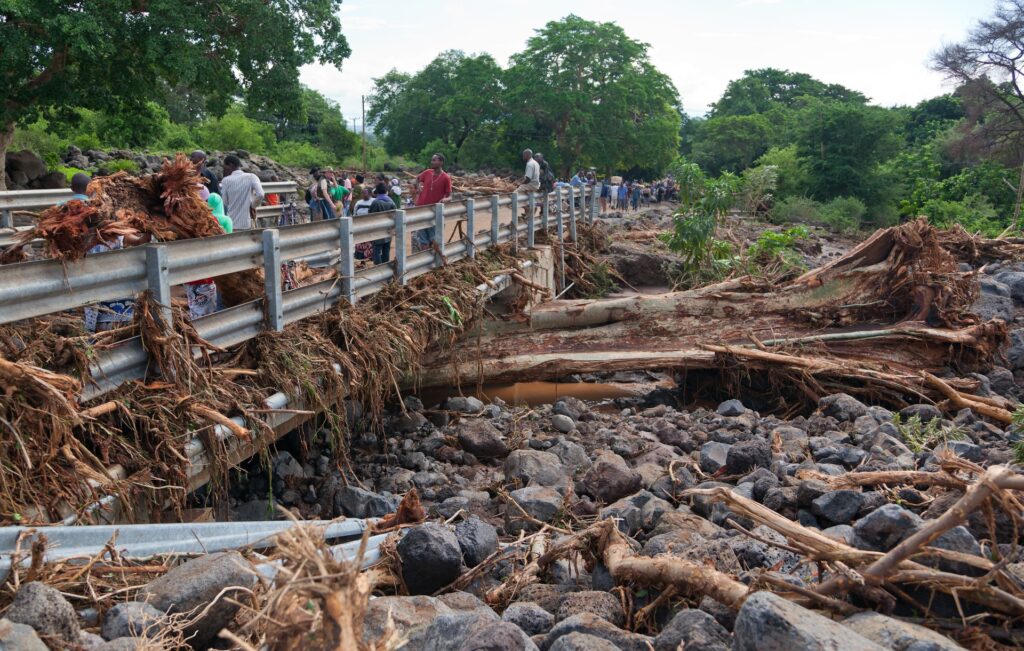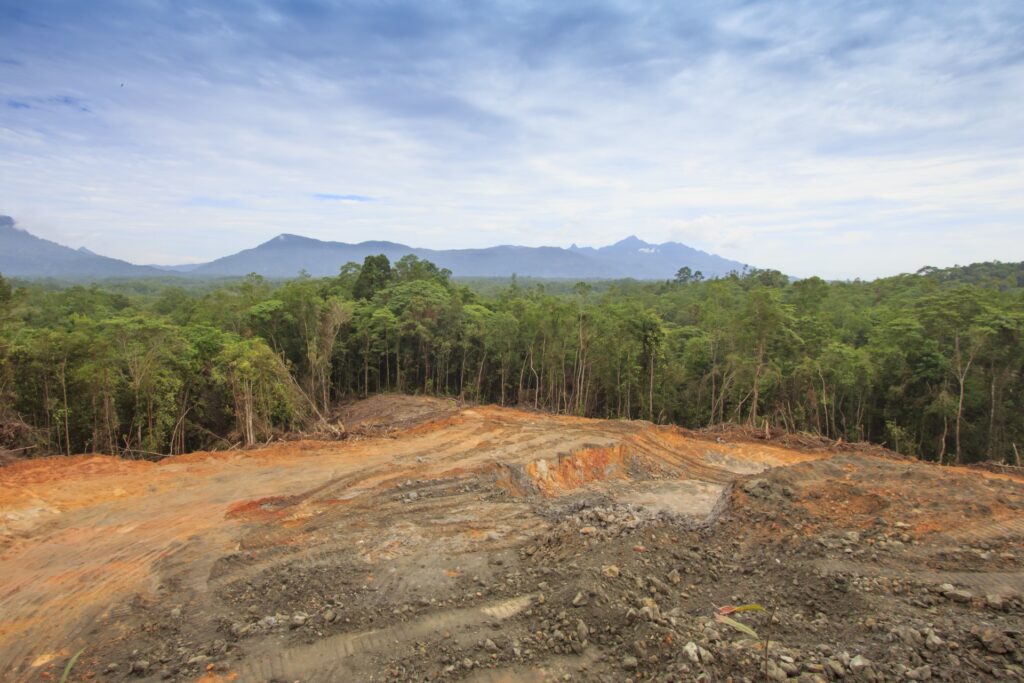Via negativa is a Latin phrase that means “by way of negation”. It originates from a stream of Christian theology that struggled to define divinity. In response they took the opposite route: they started with determining what it was not.
I came to “via negativa” through Nassim Taleb. In his book about antifragility, he points to the usefulness of studying what to avoid—”what not to do”. Taleb assumes that some things are so complex that they are just unknowable. For these situations it is very difficult to propose effective interventions or policy actions. Afterall, how to control or manipulate something that you don’t understand? In those cases, it is much more practical to first figure out “what not to do”.
“Don’t Do Stupid Shit” (President Barack Obama)
This approach is applicable to the management of water resources for three main reasons: 1) water systems are highly complex, 2) managerial capacity is usually inadequate, and 3) climate change is adding even more complexity and uncertainty.
Complexity paralyzes Management
Allan Savory in his talk for the Mulloon Institute in 2020 suggests that, as a rule, management becomes paralyzed in the face of overwhelming complexity. In his view, this is among the principal reasons why we struggle with managing natural resources. Understanding the full web of interactions in a complex system is impossible. Hence managing complex natural systems—such as hydrological, environmental, or agricultural systems—has proven extremely difficult. It is probably beyond the capacity of most water agencies to manage water resources in a fully integrated manner, at all scales. There are simply too many relevant factors that need to be taken into consideration, despite the introduction of concepts such as Integrated Water Resources Management (IWRM).
In practice, therefore, water agencies follow the reductionist approach. Complex systems are split into many smaller sub-systems—typically by sector—which are then managed separately. This approach probably corresponds with human nature and does occasionally work. However, more often than not, this method does not produce the anticipated outcome (i.e. solve the problem) because it does not appreciate the intrinsic holistic character of a complex system. This failure is not because of a lack of trying—for instance by applying the IWRM approach—or absence of specific technical knowledge. Rather, it seems an intrinsic feature of an overly complex natural system. In these systems, we simply do not understand the full web or interactions, and we therefore do not understand the full spectrum of implications of specific management decisions. In this context, knowing “what not to do” is a safe start. With the additional bonus of reducing complexity.
Entrenched silo thinking
“To go fast, go alone—but to go far, go together” (African proverb)
The prevailing reductionist approach in the water sector is further amplified by silo thinking. With separate agencies for hydropower, irrigation, agriculture, environmental protection, livestock, emergency response, flood control, and what have you, the institutional landscape for managing water resources is typically fragmented.
Management consultants will emphasize the importance of collaboration and information sharing and propose institutional reforms. For all the good reasons. Yet—very often—reality is different, and silos remain stubbornly entrenched. If that is the case, we should look for a practical way to manage water resources without a fully holistic process and outlook. The study of “what not to do” is low-risk.
Additional complexity because of Climate Change
Lastly, climate change—which we know is happening, but not how much and how fast—is adding an extra layer of complexity. Note that the impacts of climate change are non-linear and that many things happen “at the extremes”. Hence it becomes much more difficult to understand the real implications of a specific management decision. There are risks of “unintended consequences” or of doing “not enough”. In this context, knowing “what not to do” is a practical and safe response.
What “to avoid” in water resources management
I compiled a tentative list of “what not to do” in the water sector. It aims to simplify management of water resources but also strengthen the resilience of the socio-economic systems that depend on water and the natural resource base.
Note: the study of “what to avoid” is obviously connected with an assessment of potential interventions; they are a pair, they always come together; the former (“what to avoid”) is best implemented before the latter (“what can we do”) because it will quickly eliminate potential policy actions and interventions that are, in fact, not practical or too complex; this blog post, however, will only focus on “what best to avoid”.
Do not build in the floodplain
Accept occasional flooding; use the floodplain for agricultural and environmental purposes but prohibit the construction of permanent housing or critical infrastructure; accept that buffering flood waters is a principal function of the floodplain.
Do not try to predict extreme events
Historical records no longer represent the future because of climate change and land-use changes. Thus, rather than spending time and effort to ‘guess’ extreme events, figure out how we will cope with a severe flood, drought, or storm if they happen (and they will happen).
Do not try to quantify flood risks
As above—it is a futile effort; instead, prevent expensive flood damage through zoning and other practical measures that accept that occasional flooding will occur; this approach is much cheaper, does not create a false sense of security, does not lead to catastrophic losses, and requires much less (scarce) managerial capacity.
Do not try to quantify climate change
We do not understand the full spectrum of changes that will occur because of global warming; since the impacts are non-linear, we cannot assess the new climate extremes; thus—as above—think about practical measures how to deal with a more volatile climate rather than spend resources on (a futile) attempt to quantify these changes; (note: this does not imply that I do not value climate models; they definitely have their purpose but should not be used for operational water resources management).
Do not optimize the use of water resources
Optimizing the use of water resources exponentially increases complexity—with attendant need for more managerial resources—while increasing the risk of catastrophe; additionally, it probably also increases the risk for conflict; Joseph Tainter in “The Collapse of Complex Societies” counselled against complexity because it is too expensive; avoiding catastrophe—such as large-scale generalized crop loss because of a drought or loss of riparian ecosystems because the river runs dry—is more important than a marginal higher system output (in the good years) through optimized resource use; this specifically applies to regions where large parts of the population intimately depend on the natural resources base for their livelihood and food security.
Do not give too much credit to the Cost Benefit Analysis
Take the (very) long view when it comes to water resources infrastructure; funds for establishing infrastructure can often be mobilized; by contrast, funds for periodic maintenance are difficult to find; thus, build well in order to reduce future maintenance needs; in addition, infrastructure elements are often connected to others, and these connections provide benefits that are typically not included in the original CBA.

Do not implement infrastructure in isolation
Interventions should come in groups; elements should be positioned to create beneficial relations among them; these cluster—referred to as ‘beneficial assemblies’—are much more sustainable in practice; the focus is on the relationships; “the whole is greater than the sum of the parts”.
And here are some more:
Do not work against nature
Do not develop management systems with a single point of failure
Do not let water leave the system before it has performed at least one productive function
Do not centralize water delivery (or management)
Do not issue permits without getting ‘something in return’ in terms of water or soil conservation
Do not cut trees
Do not run water utilities on a ‘for profit’ basis
Do not clean somebody else’s pollution
There will be many more. Please leave a comment if you have suggestions for other “taboos” in water resources management.

“The Privilege of Wealth”
If you have lots of resources—for infrastructure, a large pool of highly-educated agency staff, data acquisition, models, emergency response agencies, etc.—you can casually ignore the above taboos. Countries such as the Netherlands have proven that massive infrastructure can prevent floods in a delta. “Those are the privileges of wealth”.
But that is not a realistic proposition for many—if not most—countries in this world right now. Here we must focus on reducing the damage from occasional catastrophe (caused by extreme events) while keeping management of water resources affordable. It requires a different approach. Via negativa—the study of “what not to do”—will simplify water resources management and strengthen the resilience of the water dependent socio-economic systems.
Over time—when the economy grows, and more funds become available—more complex solutions can be adopted. In my view, the rule of thumb is that the required managerial complexity and infrastructure should be comfortably accommodated within existing budgets (and not rely on external funding).
Afterthought: taboos in natural resources management
There is an analogy between “via negativa” and tribal taboos. Bill Mollison, in the Permaculture Design Manual, discusses how indigenous cultures used taboos and myths to develop self-regulating systems that discouraged unnecessary destruction of natural resources and other unthinking acts.
A paper by Anoliefo et al (2015) analyses a set of tribal taboos of the Igbo in Nigeria. Note that the taboos in this example are very local and focused on preserving sacred groves. Nevertheless, the similarities with “via negativa” are obvious. These taboos include:
- Bush fire in virgin forests was not allowed.
- It was an abomination to defecate, urinate, or engage in domestic washings in the portion of the stream for drinking.
- It was an abomination to cut down economic trees or forests designated as a sacred groove.
- Traditional Laws protected 15 major tree species
- Stealing of yam was an abominable act in Uli and the penalty was to ostracize the person from the community.
The above provides an example of how traditional Igbo communities had found ways to utilize natural resources without abusing the environment to an appreciable extent. These ways were primarily focused on “what not to do”. This approach simplified management, was cheap and practical, and strengthened resilience.
The talk delivered in 2020 by Allan Savory for the Mulloon Institute’s Tony Coote AM Memorial Lecture partly inspired this post. A recording of this (highly interesting) talk is found below.
REFERENCES
Anoliefo, Geoffrey O.; Nwokeji, Paul Anulika; and Ikhajiagbe, Beckley (2015) “Influence of Traditional Taboo Practices on Natural Resource Conservation in Uli, Ihiala Local Government Area of Anambra State Nigeria; Sustainable Community Development.,”Journal of Environmental Sustainability: Vol. 4: Iss. 4, Article 2.
Bill Mollison; Permaculture Design Manual; 1988, Tagari Publications, Australia

Great content! Keep up the good work!